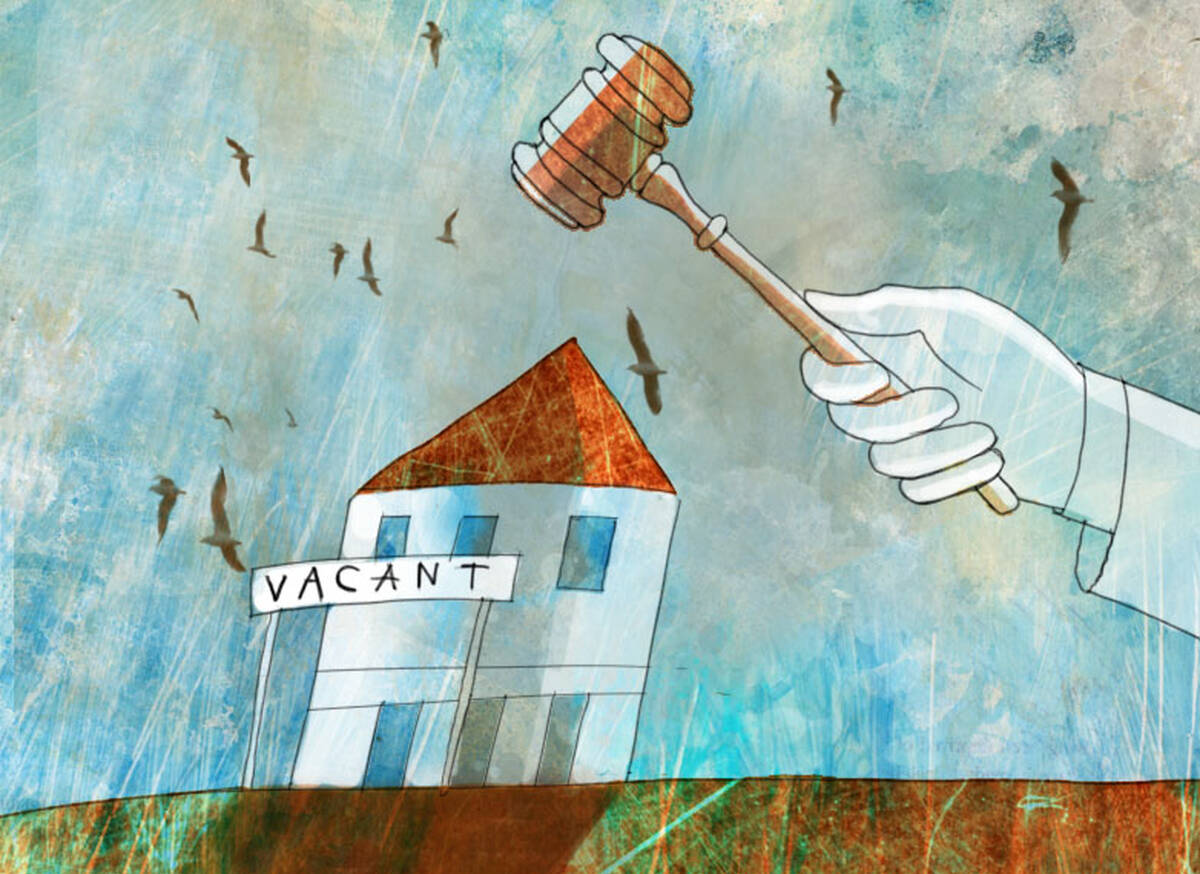Finance & Accounting Economics Jul 5, 2016
Chapter 7 vs. Chapter 11: Which Bankruptcy System Is Better?
In certain markets, forcing companies to liquidate could cause offices and factories to sit empty.

Yevgenia Nayberg
For a failing company, declaring bankruptcy is painful. And it can be painful for the economy as well. After all, bankrupt companies occupy a substantial amount of real estate, not to mention employ local workers, so it is vital that the bankruptcy process put those assets to good use.
U.S. courts have two options in deciding how to adjudicate bankruptcies. Under Chapter 7, a firm must liquidate and sell all of its assets in an auction. Under Chapter 11, managers can negotiate with creditors to decide whether to reorganize the firm or liquidate some or all of its assets.
While this dual bankruptcy system has been available since the late 1970s—and most bankruptcy systems around the world mimic one of the two processes—“we’ve never really known which system works better or under what conditions,” says Ben Iverson, an assistant professor of finance at the Kellogg School of Management.
So he and his collaborators compared the two. They found that putting a firm into Chapter 7 increases the chances that its real estate assets will sit vacant and employ fewer workers. However, these patterns mainly occur in markets with relatively few potential buyers in the same industry. “The optimal bankruptcy system depends a lot on the kind of market you’re in,” Iverson says.
The results suggest that forcing a company into liquidation could sometimes harm the economy. In those situations, a better strategy might be to give the company time to form a plan and potentially reorganize rather than trying to sell all its assets right away.
That does not mean all Chapter 11 companies will bounce back. Many in Iverson’s study did, in fact, shutter. But the key difference was that these companies did not have to fold immediately, which allowed them to stay in business while looking for buyers—and thus reduced the chances that offices and factories would go unused. “A lot of them still shut down,” Iverson says. “But we don’t force it to happen.”
Locations, Locations, Locations
“In any dynamic economy that’s evolving, you’re always going to have companies that fail,” Iverson says.
If a firm is not the most productive user of a particular asset, a shutdown could even be desirable, as office buildings, employees, or other resources transition to other uses. For example, if an auto-parts company shuts down, and its factory is better suited to producing sewing machines, then handing over the factory to a sewing-machine company will boost the economy.
In their study, Iverson and his collaborators Shai Bernstein and Emanuele Colonnelli, who are both at Stanford University, analyzed Chapter 11 bankruptcy filings for roughly 28,000 companies nationwide from 1992 to 2005. In about 40 percent of the cases, a judge converted the firm to Chapter 7; the other 60 percent remained in Chapter 11.
In thin markets, “forcing firms into liquidation is very costly.”
By identifying each bankrupt company’s locations in U.S. Census data, they could track what happened to each piece of property—roughly 129,000 in total—over the next five years. If the same address showed up under another firm’s name, that meant a new company had moved in.
Empty Buildings
Despite the fact that Chapter 11 does not force companies to liquidate, the researchers found that, “in reality, the vast majority shut down,” Iverson says. When a company stayed in Chapter 11, three-quarters of its locations were no longer occupied by that firm five years after filing.
The researchers also found that time is of the essence. If a location did not find a new owner within two years, it was likely to sit vacant for the rest of the study period. In some cases, an office or factory might simply be in an undesirable location. But the extended vacancy could occur because the building gets run-down or customers drift to another business district.
When a location did transition to another company, the new owner was often in the same industry—for instance, a failed restaurant location was taken over by another restaurant. But this was less likely if the company had been converted to Chapter 7.
“The firms that are liquidated are typically the worst firms,” Iverson says. “If they’re not performing well, it’s pretty unlikely that another firm that does the exact same thing will perform well in that location.”
Through Thick and Thin
This reality created a challenge for the researchers. They could not simply compare Chapter 7 with Chapter 11 companies because the liquidated firms tend to be worse. Any differences in the fate of their assets might be due to the companies’ quality and not to the bankruptcy system. So how could the team figure out whether the Chapter 7 or 11 system is better for the economy?
The researchers solved this by taking advantage of a quirk of the legal process. Bankruptcy cases are randomly assigned to judges. And when a firm files for Chapter 11, the judge has some discretion over leaving it in Chapter 11 or converting it to Chapter 7.
It turns out that different judges have different interpretations of the law and tend toward either Chapter 7 or 11. This means that similar companies could be assigned to Chapter 7 or 11 depending on which judge oversaw their case, creating something close to a randomized experiment. So Iverson’s team was able to compare the outcomes of cases assigned to judges who favor Chapter 7 with the outcomes of otherwise-identical cases assigned to judges who favor Chapter 11.
They found substantial differences. If a company was converted to Chapter 7, its locations were 17 percent more likely to remain vacant than if the company had stayed in Chapter 11. “You literally can’t find a buyer,” Iverson says. And there were on average 34 percent fewer employees at these firms’ locations, because locations stood empty or remaining locations employed fewer people.
But the type of bankruptcy only really mattered in “thin markets”—which have fewer potential buyers in the same industry—than “thick markets.” (For example, an urban area might be a thick market for restaurants but a thin market for grain silos.) If a Chapter 7 company was in an area with a lot of potential buyers, the location was just as likely to get snapped up, and the employment rate was just as high, as if the company had stayed in Chapter 11.
A Costly Strategy
The results suggest that in thin markets, “forcing firms into liquidation is very costly,” Iverson says. “It dramatically reduces utilization of the asset.”
While some companies are undoubtedly so bad that they should be liquidated immediately, the firms that could reasonably fall into either Chapter 7 or 11 might be better off with the latter approach so that they can take time to formulate a plan or find a buyer, Iverson says. And the bankruptcy code could do a better job of considering what local market conditions are like when determining how a firm should go through the bankruptcy process.
The study comes with some caveats. First, it is possible that employees of a shuttered company ended up with good jobs at another firm post-bankruptcy, even if the real estate assets went unused. Additionally, a painful Chapter 7 bankruptcy process might be better for the economy in some ways because managers are more motivated to stay out of bankruptcy in the first place.
It may seem obvious, but the research bolsters the idea that the best course of action is to avoid the bankruptcy process altogether. If a company in a thin market is forced into Chapter 7, they might not be able to find a buyer on short notice. Instead, Iverson suggests, the firm should take intermediate steps such as selling assets or renegotiating with creditors.
“It’s not good to wait until it’s an emergency situation,” he says.
Bernstein, Shai, Emanuele Colonnelli, and Benjamin Iverson. 2016. “Asset Allocation in Bankruptcy.” US Census Bureau Center for Economic Studies Paper No. CES-WP-16-13.


